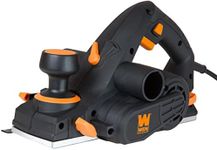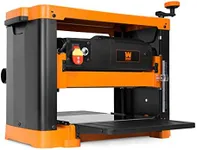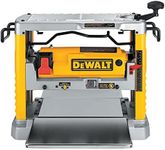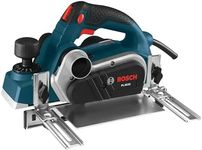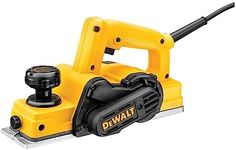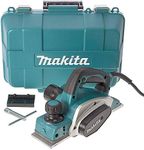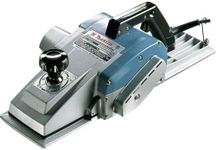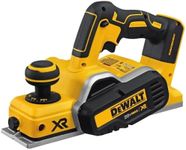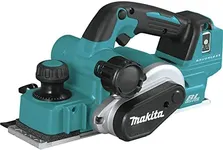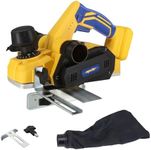Buying Guide for the Best Planers
When it comes to buying a planer, it's important to understand the key specifications and features that will help you choose the best tool for your needs. A planer is a woodworking tool used to create flat and smooth surfaces on wood. Whether you're a professional carpenter or a DIY enthusiast, selecting the right planer can make a significant difference in the quality of your work. Here are the key specs to consider and how to navigate them to find the best fit for you.Type of PlanerThere are several types of planers, including handheld planers, benchtop planers, and stationary planers. Handheld planers are portable and great for small projects or touch-ups. Benchtop planers are more powerful and suitable for medium-sized projects, offering a good balance between portability and performance. Stationary planers are the most powerful and are ideal for large-scale projects and professional use. Choose the type based on the scale and frequency of your woodworking projects.
Cutting WidthThe cutting width of a planer determines the maximum width of the wood it can handle. This spec is important because it affects the size of the material you can work with. Planers typically range from 3 inches to 15 inches in cutting width. For small, detailed work, a narrower cutting width is sufficient. For larger projects, such as tabletops or wide boards, a wider cutting width is necessary. Consider the typical size of the wood you plan to work with when choosing the cutting width.
Cutting DepthCutting depth refers to the maximum amount of material the planer can remove in a single pass. This is important for efficiency and precision. Planers usually offer cutting depths ranging from 1/16 inch to 1/8 inch. For fine, detailed work, a smaller cutting depth is preferable as it allows for more control and precision. For larger, rougher work, a greater cutting depth can save time by removing more material quickly. Think about the type of projects you will be doing and how much material you need to remove in each pass.
Motor PowerMotor power, measured in amps for electric planers, determines the tool's ability to handle tough materials and continuous use. Higher motor power means the planer can handle harder woods and larger projects without bogging down. Planers typically range from 5 to 15 amps. For light, occasional use, a lower power motor is sufficient. For frequent, heavy-duty use, especially with hardwoods, a higher power motor is necessary. Assess the intensity and frequency of your work to choose the appropriate motor power.
Cutterhead SpeedCutterhead speed, measured in revolutions per minute (RPM), affects the smoothness of the finish. Higher speeds result in a finer, smoother finish. Planers usually have cutterhead speeds ranging from 8,000 to 20,000 RPM. For projects requiring a high-quality finish, such as furniture making, a higher cutterhead speed is beneficial. For rougher work where finish quality is less critical, a lower speed is adequate. Consider the level of finish you need for your projects when evaluating cutterhead speed.
Number of BladesThe number of blades on the cutterhead influences the smoothness and speed of the cut. More blades mean a smoother finish and faster material removal. Planers typically have 2 to 4 blades. For fine, detailed work, more blades are preferable. For general woodworking or rougher projects, fewer blades are sufficient. Think about the quality of finish you require and the speed at which you need to work when choosing the number of blades.
Dust CollectionDust collection is an important feature for maintaining a clean workspace and ensuring your health and safety. Planers with built-in dust collection systems or ports for attaching a vacuum can significantly reduce the amount of dust and debris. If you work in a small or enclosed space, or if you prioritize cleanliness, look for a planer with an effective dust collection system. Consider your workspace and how much dust you can tolerate when evaluating this feature.
